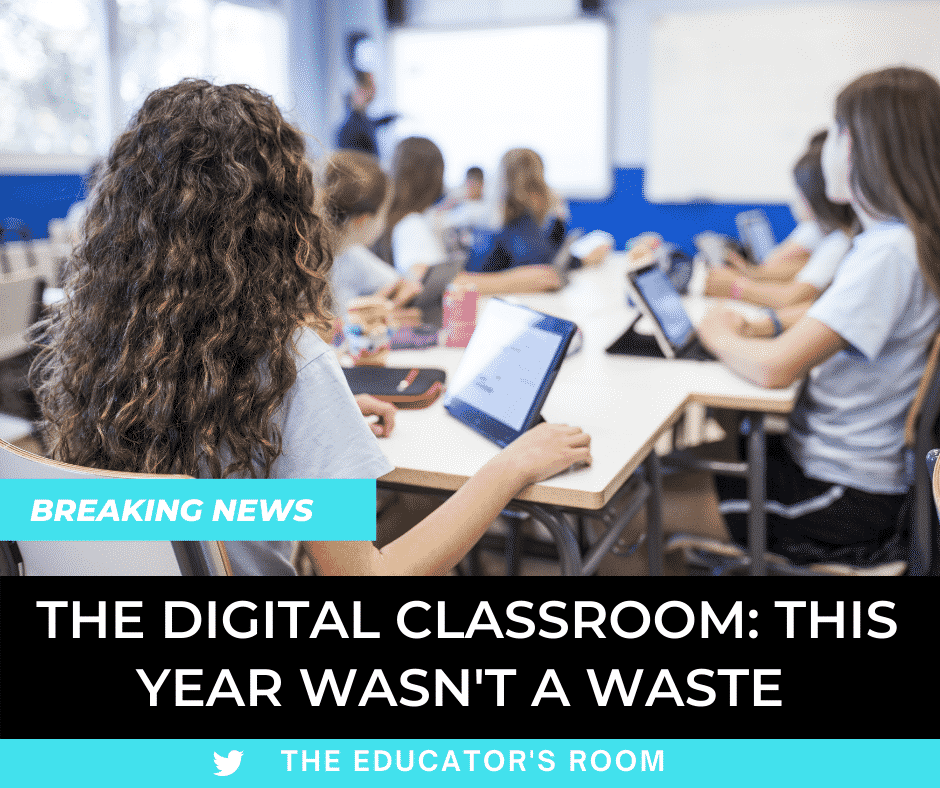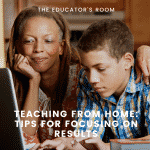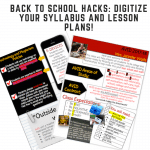 Dianna Souder, Ed.D has been an educator for 11 years, having taught middle school for 8 years and elementary for 3. During her career, she has worked for several Title I schools, focusing on helping struggling learners obtain success in any way possible. She believes in hands-on learning and finding ways to make education engaging and fun. In addition, believe all learners deserve to be successful and have dedicated my career to helping every learner achieve their goals, and focusing on building confidence in learners.
Dianna Souder, Ed.D has been an educator for 11 years, having taught middle school for 8 years and elementary for 3. During her career, she has worked for several Title I schools, focusing on helping struggling learners obtain success in any way possible. She believes in hands-on learning and finding ways to make education engaging and fun. In addition, believe all learners deserve to be successful and have dedicated my career to helping every learner achieve their goals, and focusing on building confidence in learners.
I miss the classroom. I miss the interaction of students, the group activities, the playfulness of the students, and the all-around interaction among colleagues. The classroom was a place of magic- laughing, learning, and bonding. Since COVID-19, however, that has changed life and the way students learned. What was once an enjoyable profession has become a daunting task of trying to figure out how to reach students in new ways and teaching in new methods neither known to the teacher or the student.
COVID-19 pushed many into online education strictly, and teachers and students have felt the loss of those daily human interactions. Digital learning started as a curse to many, especially teachers who had limited proficiency in technology and students who had limited knowledge of how to navigate digital classroom platforms, not to mention a loss of support they so desperately could benefit from. For teachers, learning to navigate grading assignments was the least of the issues- the biggest issue was investing the students into live meetings for many reasons and the collection of work. Maybe their Wi-Fi at home was weak, or perhaps they were busy helping with siblings, so school became less important. Perhaps parents were working and unable to help, let alone whatever other issues the pandemic brought into their lives. Many different reasons may have arisen, but one thing was for sure- students nor educators were ready for what came in March. And the backlash has been seen around the world.
[bctt tweet=”Students at one point or another will most likely take a digital course in their life and have gained more preparation this way as opposed to waiting until high school, college, or even a trade for this experience.” username=””]
So where is the positive such a dark situation? While digital learning, especially for younger learners, has been possibly a negative because of the abrupt nature of the transition from the classroom to online, there is a silver-lining: students at one point or another will most likely take a digital course in their life and have gained more preparation this way as opposed to waiting until high school, college, or even a trade for this experience. According to statistics from Edudata.org (2020), over 19 million students enrolled in degree-seeking post-secondary institutions, of which 6.6 million engaged in some form of an online class or completed their degree exclusively online in 2017. Imagine what research will show for 2020, considering how many universities shut down? In addition, according to statistics from Sander Tamm (2021), over 90% of surveyed employers use digital training to train or renew staff training. That means that of the students in your class, many will have online courses during their degrees or careers. While this seems far off for younger students, versus older students, the positive is students are gaining hands-on digital experience with digital submissions, video lessons, interacting with a teacher through the computer, and much more. Rather than taking a negative experience and keeping it as negative memory, the perfect opportunity has arisen to allow for interactions with students in a new way.
There are many ways to manage a digital classroom, and teachers around the world are finding their way through that perfect blend, as there really is no true 100% method for classroom management. There are some strategies that you may find helpful to enhance the learning experience for your learners, especially the elementary learners. Here are just a couple of ways to enhance the digital classroom:
Participation
Let’s be honest, it is hard to find a perfect balance to call on everyone every time. Just like in the classroom, one way to ensure equal participation is to call on each student once prior to calling on another, offering all one opportunity to speak before you call on others again. Even if a student chooses to skip their turn, that is ok. At least all students have had the opportunity to be called on once before others have a second chance. Another way is a random name picker, such as Wheel of Names where student’s names can be put in and spun randomly. With Wheel of Names, you can save which student was called on to ensure they are not called on twice. Name generators are a fun and easy way to ensure all receive equal participation.
Tutoring/1-on-1 Time
Students need and crave that individualized attention. One major complaint I hear from a lot of students I work with is that they wish some of their teachers would tutor one on one instead of in one big group. Perhaps offer tutoring in 20-minute slots for each student so they can get one on one help if they need it, or individualized attention. Allow students to sign up using a site like Sign Up Genius to allow them to schedule time with you. Perhaps you will work, perhaps they will share their day with you. This is an excellent way for students to build a bond to reduce that feeling of disconnection while being virtual. That does not mean you may not do group meetings still, as if there is a large group needing help that is a useful strategy, but it will allow students to receive the attention they need and ask questions they may feel uncomfortable asking in the group.
Workload
I know it is tempting to give a lot of work to assess learning, but too much work can overload a student, making it more likely to not complete tasks. Try to make assignments more user-friendly, such as Google Forms, so students can be assessed in an easy format, or using Google Slides to have students save their own copy to edit. If using Microsoft Teams, as many schools have switched to, try to provide digital work submission links as the tedious task of uploading a PDF can be overwhelming to families as well. Less paper is also best for both students and teachers, as families may not be able to afford paper, keeping in mind the financial states of the economy. Try to make things as digital as possible. One thing I have seen my young children’s school do is to provide many practice activities but only collect on certain assignments for mastery, rather than on everything. Another teacher I have seen use Google Sheets to create engaging math quizzes with answers pre-plugged in using formulas for students so they can see mastery on the spot if they get it wrong, giving a chance for correction before submission.
Fun
Fun is always great! Try to incorporate brain breaks into lessons. One method I personally favor is a 5-minute dance break such as GoNoodle for younger learners, Quizzizz for older learners to quiz their progress as they work (Quizlet and Kahoot offer the same option). I also use mini-games like Mathnook to have students practice a strategy for five minutes, providing them the link to the game specifically I want them to review with and set a timer.
Videos
Videos are a useful tool to enhance learning, but minimal use during class is more beneficial than relying on them to enhance during class time unless necessary to watch, such as for a conversation point. Saving videos for later is a better format to allow maximum enrichment time during class, as students can always watch videos later and reflect in the classroom, or pre-watch before our lesson and we can discuss during the lesson. This will also reduce off-task or unfocused behaviors during a lesson, so students can be more engaged during class. I use this strategy with my students as well, and many parents have thanked me for it as their student is not fond of in-class videos and may wander off to do other things. Students still may not watch videos, but realistically that also is true in a live meeting as well as they may go off and do something else. Try to maximize learning time with engagement and find extra resources for students to have access to deepen their learning.
There are many useful tools out there for digital classrooms that can be tapped into to find the right fit for each class. While each of these recommendations may not help you, perhaps you will find a new strategy to enhance the learning experience, bringing the joy back to the classroom, despite not being face to face.

References
“Distance Learning Statistics [2021]: Online Education Trends.” EducationData, 28 Feb. 2021, educationdata.org/online-education-statistics.
Tamm, Sander. “100 Essential E-Learning Statistics for 2021.” EStudent, 2 Dec. 2020, e-student.org/e-learning-statistics/.





